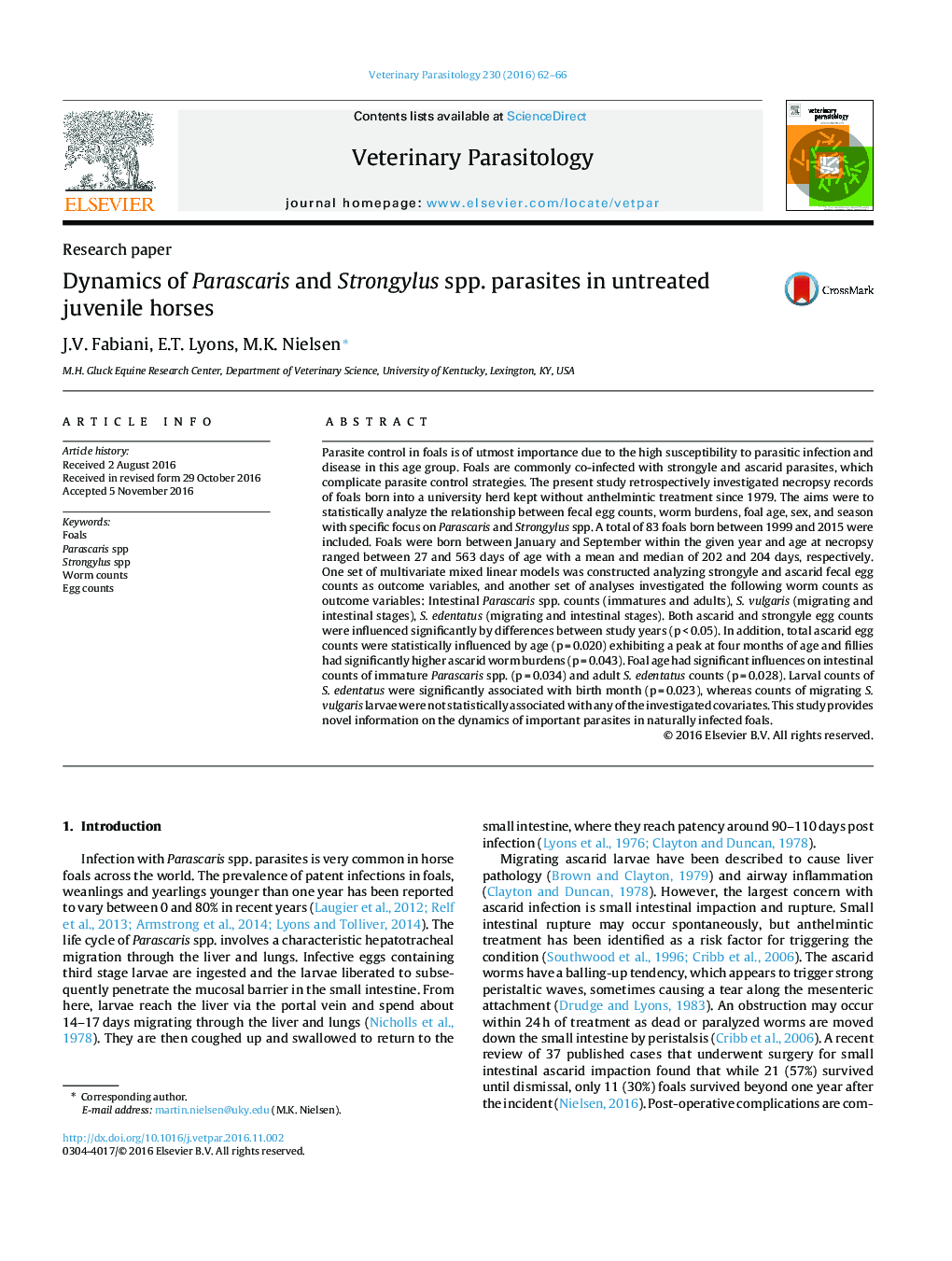| Article ID | Journal | Published Year | Pages | File Type |
|---|---|---|---|---|
| 5545802 | Veterinary Parasitology | 2016 | 5 Pages |
Abstract
Parasite control in foals is of utmost importance due to the high susceptibility to parasitic infection and disease in this age group. Foals are commonly co-infected with strongyle and ascarid parasites, which complicate parasite control strategies. The present study retrospectively investigated necropsy records of foals born into a university herd kept without anthelmintic treatment since 1979. The aims were to statistically analyze the relationship between fecal egg counts, worm burdens, foal age, sex, and season with specific focus on Parascaris and Strongylus spp. A total of 83 foals born between 1999 and 2015 were included. Foals were born between January and September within the given year and age at necropsy ranged between 27 and 563 days of age with a mean and median of 202 and 204 days, respectively. One set of multivariate mixed linear models was constructed analyzing strongyle and ascarid fecal egg counts as outcome variables, and another set of analyses investigated the following worm counts as outcome variables: Intestinal Parascaris spp. counts (immatures and adults), S. vulgaris (migrating and intestinal stages), S. edentatus (migrating and intestinal stages). Both ascarid and strongyle egg counts were influenced significantly by differences between study years (p < 0.05). In addition, total ascarid egg counts were statistically influenced by age (p = 0.020) exhibiting a peak at four months of age and fillies had significantly higher ascarid worm burdens (p = 0.043). Foal age had significant influences on intestinal counts of immature Parascaris spp. (p = 0.034) and adult S. edentatus counts (p = 0.028). Larval counts of S. edentatus were significantly associated with birth month (p = 0.023), whereas counts of migrating S. vulgaris larvae were not statistically associated with any of the investigated covariates. This study provides novel information on the dynamics of important parasites in naturally infected foals.
Keywords
Related Topics
Life Sciences
Agricultural and Biological Sciences
Animal Science and Zoology
Authors
J.V. Fabiani, E.T. Lyons, M.K. Nielsen,
